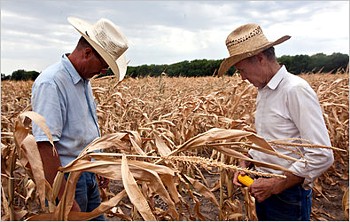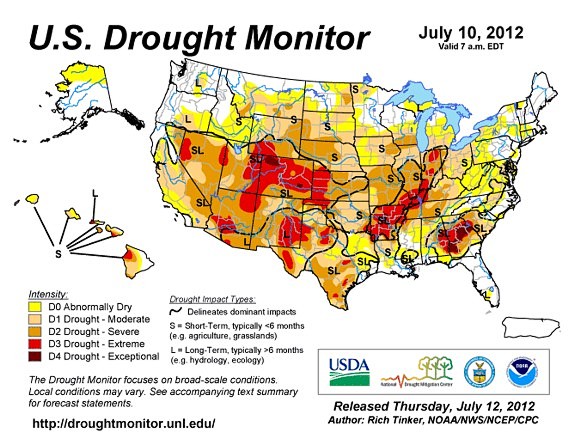It’s getting hotter and hotter, and drier and drier for most parts of the world, and the United States is especially feeling it.
 Photo by Mashid Mohadjerin from The New York Times.
Photo by Mashid Mohadjerin from The New York Times.
The U.S. Drought Monitor has released mapping analysis for July, showing the month to have the “second largest” geographic expanse in severe to worse drought conditions, since the mapping began about 12 years ago.
Many of us, especially if we live in metropolitan areas, don’t usually think about water until there is very little of it. In these times, we remember that it’s our most important resource for drinking, cooking, bathing, washing, etc.
In agricultural communities, water takes on the added importance of sustaining livestock and crops – and this is important to everybody because they feed us.
To understand the significance of the different drought terms, the drought monitor explains that, “Moderate drought’s telltale signs are some damage to crops and pastures, with streams, reservoirs or wells getting low.”
“At the other end of the scale, exceptional drought includes widespread crop and pasture losses, as well as shortages of water in reservoirs, streams and wells, creating water emergencies,” the monitor adds.
To give an understanding of the numbers we are dealing with, the monitor said, “The July 10 map shows 37 percent of the contiguous (adjoining) 48 states in severe drought or worse.” This is the second largest expanse since Sept. 10, 2002, when the drought area was at 38 percent.

Looking beyond the most severe conditions to the overall drought conditions, it’s a worse picture with the monitor saying, “Looking only at the 48 contiguous states (on the July 10 map), 61 percent of the country’s land area was in moderate drought or worse, up from 56 percent the week before. The previous record was 55 percent on Aug. 26, 2003.”
Michael Hayes, director of the National Drought Mitigation Center at the University of Nebraska-Lincoln, expressed concern, saying that, “The recent heat and dryness is catching up with us on a national scale.”
Click to read more ...
 May 5, 2014
May 5, 2014  Kyriaki (Sandy) Venetis
Kyriaki (Sandy) Venetis 






